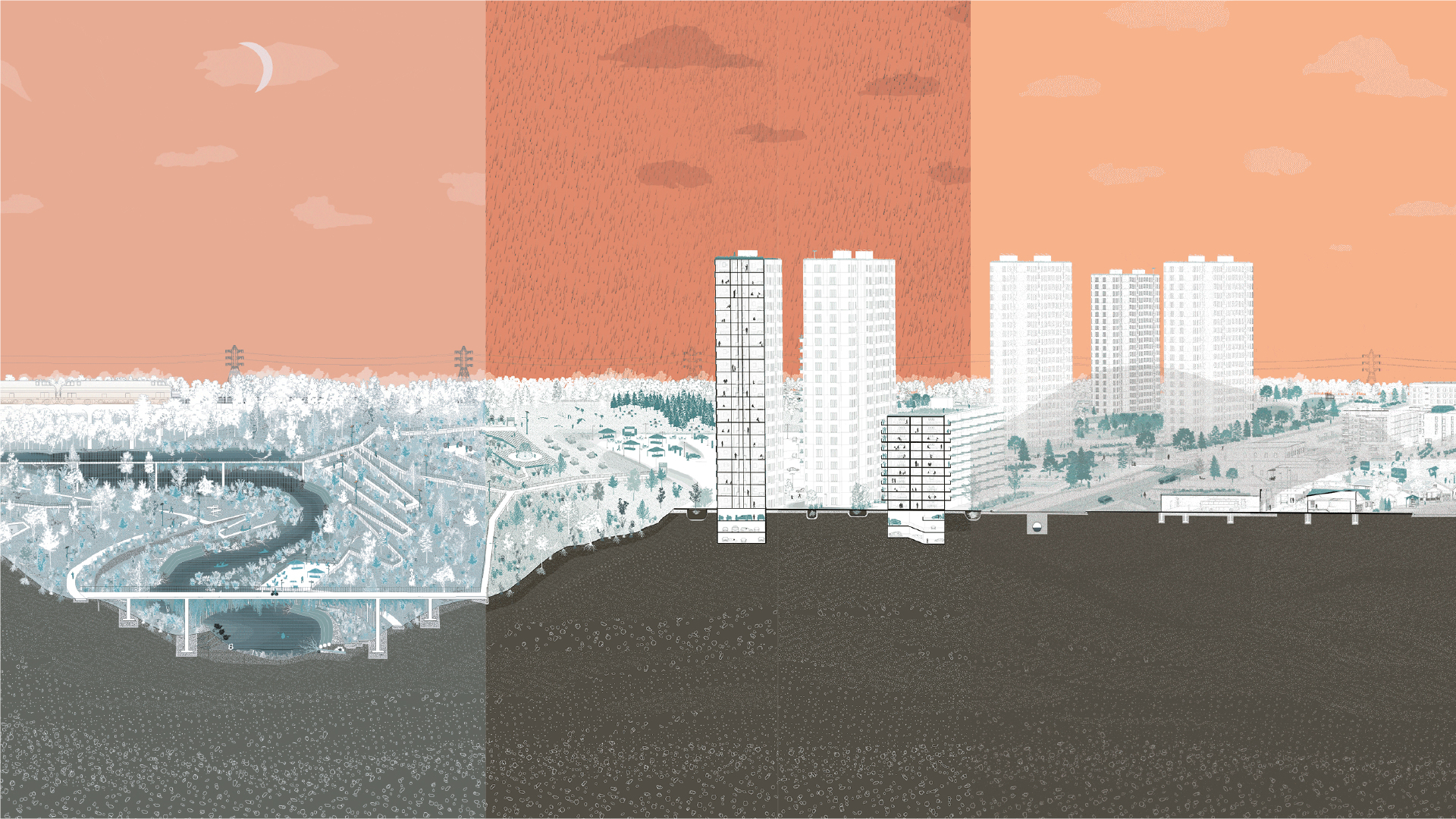
15.03.24 - Centre for Landscape Research project Parks in Action launches comprehensive website
Based at the Daniels Faculty’s Centre for Landscape Research, Parks in Action is a multidisciplinary, multi-year design-research initiative investigating the untapped potential of public and private open spaces in Toronto’s inner suburbs.
It has included a partnership with Toronto Metropolitan University’s School of Urban and Regional Planning and is funded by the University of Toronto’s School of Cities, the Canada Foundation for Innovation, the Social Sciences and Humanities Research Council Partnership Grant, TransformTO’s Neighbourhood Climate Action Champions Program and Environment Canada.
Recently, Parks in Action launched a comprehensive website, parks-in-action.webflow.io, where is outlines and archives its research to date and documents the workshops and exhibition connected to it.
Entitled “Parks in Action: Co-designing Inclusive Open Spaces,” that exhibition (pictured in slideshow below) opened in June of last year and is still on view at the World Urban Pavilion in Toronto’s Regent Park.
The Parks in Action project, writes Associate Professor Fadi Masoud, Director of the Centre for Landscape Research, “underscores the vital role of suburban parks, open spaces and the public realm in Toronto’s climate adaptation and mitigation,” particularly with relation to air pollution, urban heat-island effect and urban flooding.
“One of its primary objectives,” he continues, “is to assess and quantify the social and environmental value of public and private open spaces in the city’s inner suburbs, specifically its ‘Tower in the Park’ neighbourhoods.”
It also “investigates the untapped potential of these parks in suburban communities,” and asks what kind of design and management strategies are needed to reflect the diversity and heterogeneity of the population they serve, as well as how they might be retrofitted to increase their environmental and social performance.
In June of 2019, the City of Toronto launched its first Resilience Strategy at the Daniels Faculty. This strategy identified the overlap of climate risks and social vulnerability in Toronto’s aging high-rise rental apartment towers as “the single most pressing, urgent priority for the city’s resilience.”
Toronto is home to North America’s largest concentration of postwar apartment towers, with vast green spaces, ravines, parks and schools typically surrounding over 1,500 buildings throughout the city.
Over the years, the Parks in Action team has engaged in “Knowledge Exchange” sessions with grassroots leaders, city officials and community members, with members co-creating and distributing risk and opportunity maps (such as maps that illustrate the links between surface heat temperature, air pollution, land cover and tree canopy) to local leaders. Local leaders and climate champions then connected this data with lived experience and existing policy to advocate for neighbourhood change, building a shared language for considering green open spaces’ critical role in residents’ daily lives and long-term health and well-being.
Based on the “Knowledge Exchange” sessions, the Parks in Action team devised a set of Climate Design Action Cards that identify a slate of design solutions to climate change ranging from small and easy interventions to more significant ones that can be enacted or advocated by leaders and residents. The Climate Design Action Cards informed spatial scenarios on prototypical transect cross-sections of Toronto’s inner suburbs, offering innovative tools to engage with local leaders and residents, facilitate engagement, and empower community members to better advocate for local climate action.
Congruently, a series of Community Climate Action Hubs were designed for parks in equity-deserving neighbourhoods. The installations exemplified the project’s commitment to reinventing outdoor spaces, providing environmental education, increasing accessibility and offering spaces for socialization. The first set of installations is currently under construction in various parks in the city.
Overall, Parks in Action has showcased how building resilience requires a holistic approach that considers public open space as part of the shared infrastructure of climate adaptation. To that end, the design research is shaped by the lived experiences of individuals and communities, highlighting the interconnectedness of social climate action and design thinking.
For more information on the Parks in Action project and to peruse its research to date, visit its site here.





